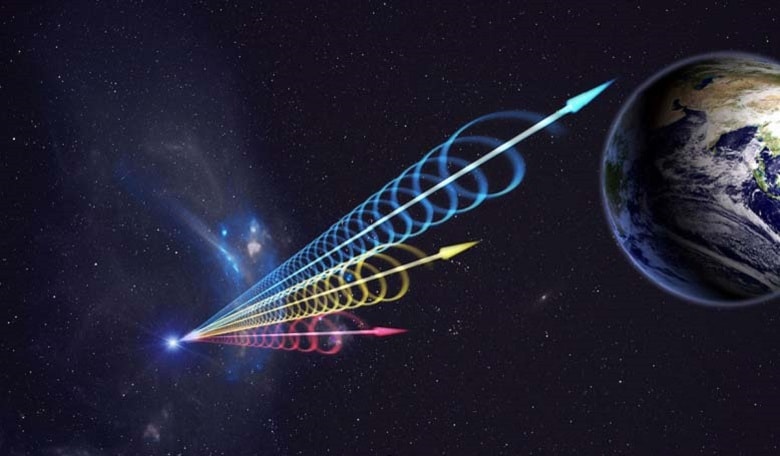In recent years, a number of anomalous radio signals that only last for milliseconds and appear to emanate from distant galaxies have been detected, however their precise origin remains unknown. Dubbed Fast Radio Bursts (FRBs) due to the lightening speed of the pulses or bursts, are dispersed according to a precise physical law and this dispersion is a key observable quantity which, in conjunction with a redshift measurement (a method used to tell the distance of an object), can be used as a probe of the intergalactic medium, and can be used in fundamental physical investigations such as tracing gravitational-wave events. Accordingly, ascertaining their true nature is of great interest to many scientists.
The search for FRBs is relatively new, with less than twenty FRBs having been detected to date and the common assumption is that they are of extragalactic origin. Last month, a team of astronomers using the Parkes Radio Telescope, published research claiming the new detection of an FRB event known as FRB 150418, along with measurements of its redshift. This event, which faded over the course of six days, was stated by the team as being largely consistent with a short gamma-ray burst radio afterglow, and that its existence and timescale was not in line with originating from a pulsar or supernovae.
As the team were able to measure the redshift of the burst along with its dispersion signal, the team were able to calculate a direct measurement of the cosmic density of ionised baryons in the intergalactic medium, and their results were stated as being in agreement with the expectation from WMAP. Such results are significant as they help to verify the ?CDM model, a model that attempts to explain the existence and structure of the cosmic microwave background, the large scale structure of galaxy clusters, along with the distribution of baryonic matter (lighter elements such as hydrogen, helium, lithium and oxygen) in the Universe.
One problem with the amount of baryonic matter in the Universe, is that half of it appears to be missing (the so-called “missing baryons” problem). Some researchers are using cosmic microwave background (CMB) data obtained via WMAP to search for the missing matter in galactic disks and halos. This research led by Evan Keane on FRB 150418 is stated as agreeing with WMAP observations.
Now however, further analysis of FRB 150418 by Williams and Berger at the Harvard-Smithsonian Center for Astrophysics has led to the suggestion that this signal is not as Keane and his team suggest, but that the observed radio emission is instead due to Active Galactic Nuclei (AGN) activity and that the emission and host galaxy the signals were detected in are unrelated to FRB 150418.
If this is indeed the case then Williams and Berger state that a precise localisation and redshift determination cannot be justified for FRB 150418, thus negating the claim of a cosmological origin for the burst. This would also have repercussions for their measurement of the cosmic density of ionised baryons in the intergalactic medium made by Keane and team.
The true identity of FRB is thus far from conclusive and further research is clearly needed to test if these enigmatic signals really could be used as cosmological standard candles and hence help pinpoint the location of gravitational waves for example or if they can be explained by known processes from familiar objects.
Information on this research can be found at http://arxiv.org/pdf/1602.08434.pdf











